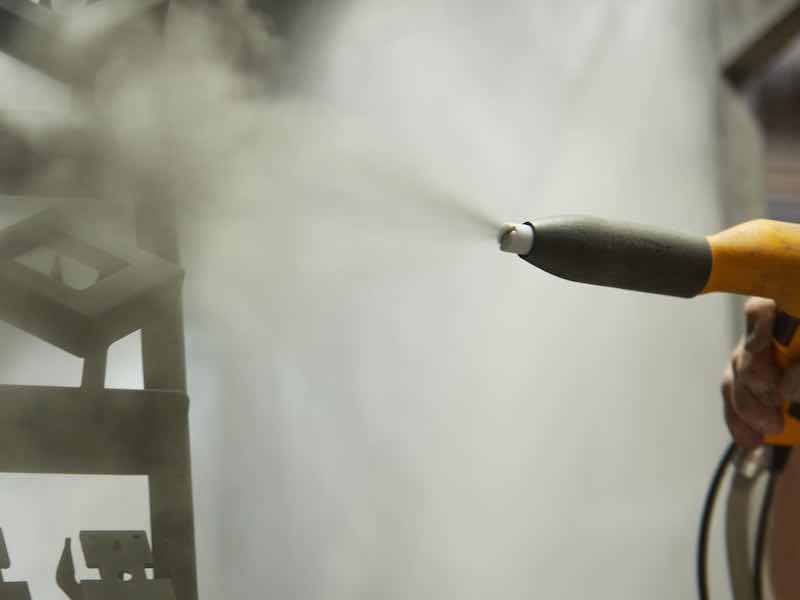When it comes to powder coating, it is satisfactory when a substrate is pulled out of the curing oven without visual imperfections and with the perfect mils.
 Mario QuicenoThere are several variables that could help the substrate fulfill the customer’s coating specifications. The painter must have consistency in painting the substrate and be versatile in painting with different colors. We are assuming here that the variables such as pretreatment, painting equipment settings, and curing oven settings are correct.
Mario QuicenoThere are several variables that could help the substrate fulfill the customer’s coating specifications. The painter must have consistency in painting the substrate and be versatile in painting with different colors. We are assuming here that the variables such as pretreatment, painting equipment settings, and curing oven settings are correct.
An experienced painter knows how many strokes a substrate needs to be painted depending on the formula and what finishes the pieces require. It is not the same as painting with a different gloss.
The Importance of Consistency
Consistency is important for conformity and accuracy in the application of powder coating on the piece. The lack of consistency could cause repainting, sanding, or rejection of the piece. All those consequences have a cost, and profits will be affected negatively. A piece rejection resulting from not being consistent could be orange peel and sagging light painting, and stars and back ionization.
Orange peel and sagging occur when the piece is over-sprayed; the painter sprayed too much powder on the substrate. The solution could be to adapt the gun settings to the painter’s hand speed or the hand speed to the gun settings. Light painting is the opposite of orange peel, suggesting not enough powder was applied to the substrate.
Stars and back ionization occur when the powder part has too much charge. There are two reasons for it: the gun is too close to the substrate, or the voltage settings are too high.
To have consistency as a painter is to know how many strokes a substrate requires to be properly covered, no matter the shape; how to paint the corners that are not easy to coat (faraday cages); the type of powder, the gun settings, and the speed of the application. It is important to know which formula needs more strokes and how to handle it.
There is ith different low gloss black or high gloss white finish that requires different techniques to paint. Of course, you have to read and follow the product’s technical specifications and customer requirements. It is also relevant to research how the different types of powders behave. Another example is if the powder is polyester, epoxy, or urethane.
Reliability of the Painter
There is not only reliability and consistency of the equipment or the product, but for the painter, as well. The right pretreatment settings, the right grounding, the automatic guns setting correctly, and the right time and temperature in the curing oven are the necessary factors a painter needs to do the job correctly. The common problems we have with the finishing, in this case, are crazing, pinholes, outgassing, fisheyes, and craters.
Crazing happens when the topcoat is under-cured. Small cracks appear in the topcoat, and transparent coats are visible. The reason for this is that the oven was not at the right temperature; pinholes and outgassing occur when trapped gases are drawn to the surface while curing. The solution for outgassing is degassing the part for 30 minutes after the coating or applying an anti-gas primer. Fisheyes and craters occur when there is contamination of your substrates. Generally, there are oils and lubricants which produce this appearance.
We have only one variable left, and that is the painter, so the painter must have the right nozzle, gun settings, and the right PPE protection.
Painting Technic and Expertise
Another variable appears here: the painting technic and expertise. There are several institutes showing different techniques of painting with powder; they show how to paint flat, round, square, and Faraday cages. All that works, but it depends on which the painter adopts.
What really matters are some variables that painters cannot avoid, such as the distance between the gun and the piece, the gun nozzles, and the painter’s hand speed movements. Finding the right gun setting is vital to create the correct appearance and thickness. An important recommendation is keeping the voltage at its maximum to get the maximum transfer efficiency, and controlling the current helps to limit the amount of charging powder that is shotted to the substrate.
Different colors require different ways of painting; it depends on the product performance characteristics and the application requirements. The information is contained in the technical data sheet, and sometimes you need to apply a primer powder coat layer and then later the final layer a little heavier mil thickness than the primer. There are some technique applications for solid tone finishes, and it could appear some issues with metallic and texture finishes.
Knowing the Strokes and the Substrate
To conclude, we can say that consistency is not just the ability of how fast or slow the painter applied the powder. It is to know many strokes the substrate needs to be properly covered with the right mils and know the behavior of different powders and substrates made of different materials. It is practicing, expertise, and constant learning.
Consistency requires hours and hours of practice, even talent needs practice. Hard work always accompanies talented practices, so talent requires hard work, and that would bring mastering skills.
Mario Quiceno is a powder coating painter in Winnipeg, Canada. Member of the Chemical Coaters Association. He has a mechanical and manufacturing engineer degree from Universidad Autonoma de Manizales, a certification in Project Management, and an MBA from Universidad del Valle.



































